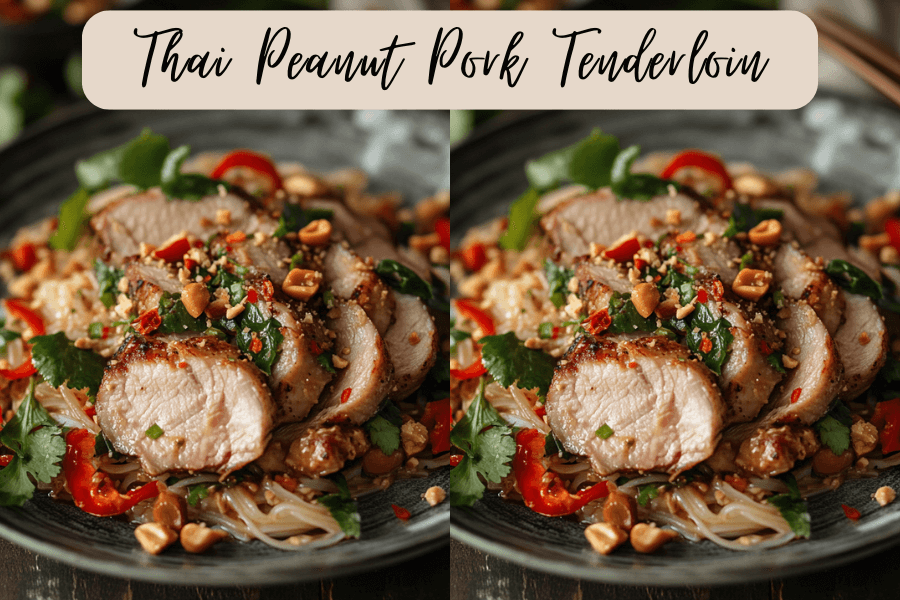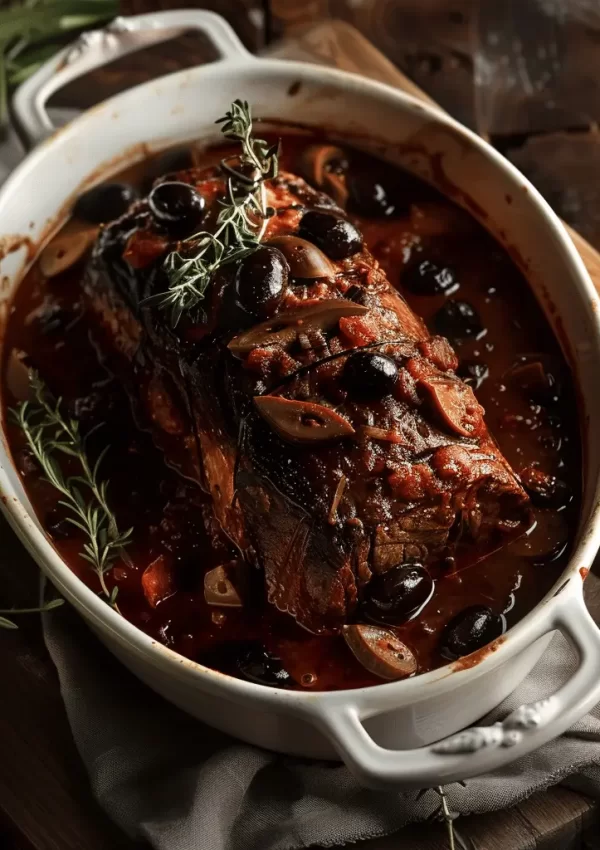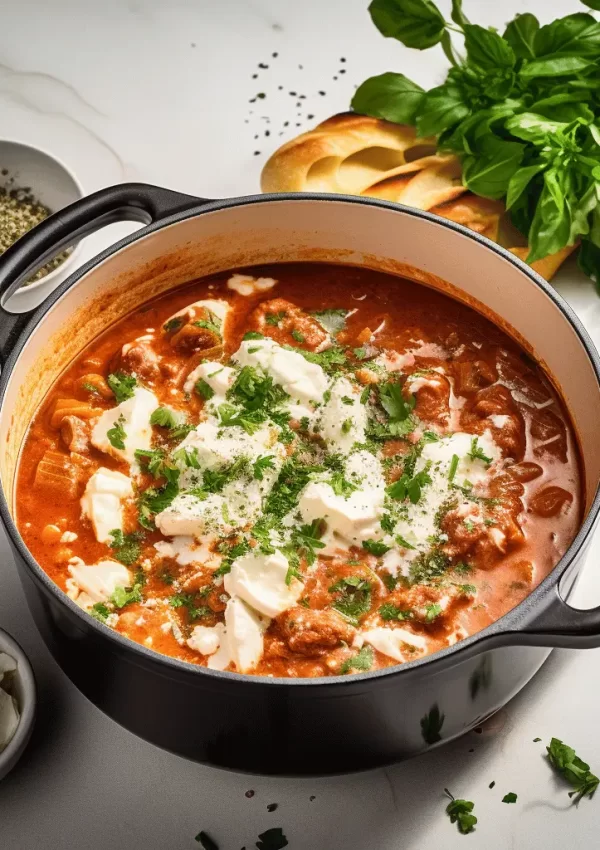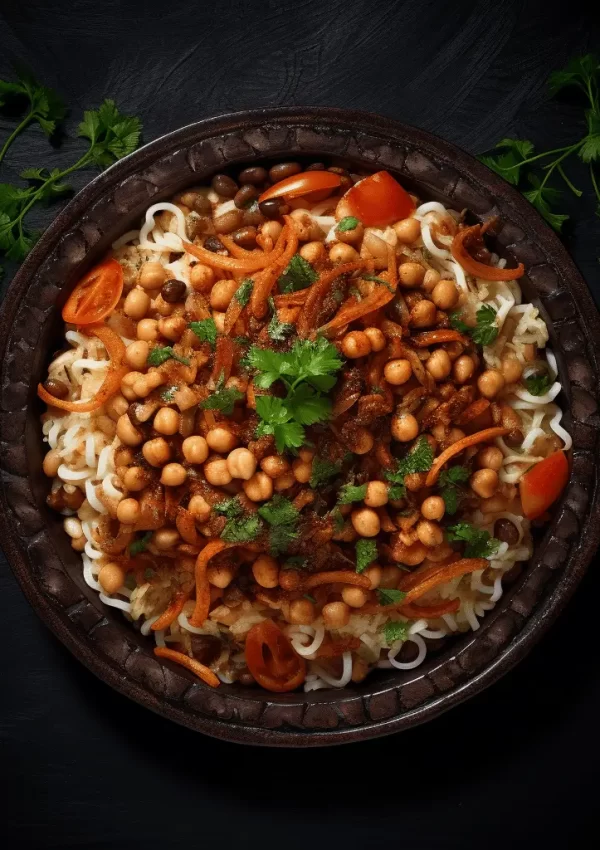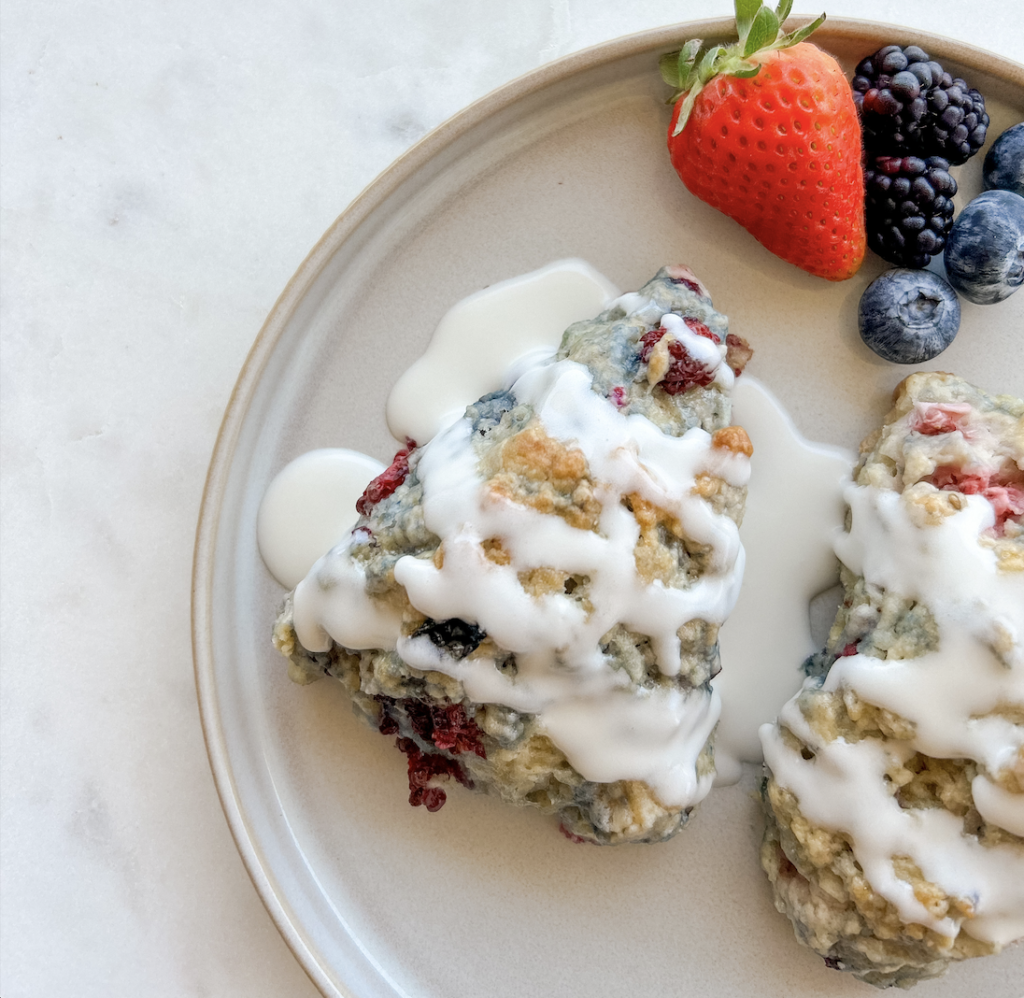When you’re craving something packed with comforting and refreshing flavor, this Thai peanut pork tenderloin with rice noodles might just be the answer. It’s got everything you want in a meal: tender, juicy pork, creamy peanut sauce with a hint of spice, and vibrant, fresh herbs and veggies. Whether you’re planning a cozy night in or want to wow your dinner guests, this dish brings a perfect balance of savory, tangy, and nutty flavors to the table.
In this recipe, I use my salt-free Thai spice blend from my spice company – The Spice Girl Kitchen. I’m completely biased because it is, after all, my spice recipe and the best Thai seasoning on the market. But feel free to use whatever Thai seasoning you have on hand.
This post is all about Thai Peanut Pork Tenderloin.
What Makes This Dish Special?
There’s something magical about the combination of savory pork and a creamy, slightly spicy peanut sauce. The marinade infuses the pork with layers of flavor, while the quick sear and oven roast lock in that juicy goodness. Paired with tender rice noodles and a fresh burst of cilantro, basil, and crunchy vegetables, this dish is all about harmony—where each bite offers a medley of textures and tastes.
What I love most about this recipe is its versatility. It’s easy enough for a weeknight dinner but sophisticated enough to be the star of your next gathering. The bright herbs and crunchy peanuts add the perfect finishing touch, making it a feast for both the eyes and the taste buds.
[the_ad id=”3378″]
The Secret’s in the Sauce
The peanut sauce is what ties this whole dish together. Creamy, tangy, a little bit spicy, and just the right amount of sweet, this sauce is the definition of comfort. The combination of peanut butter, lime juice, and a kick of sriracha creates a balanced sauce that complements the richness of the pork while enhancing the freshness of the veggies.
And the best part? This peanut sauce is incredibly versatile. You can use any leftovers as a dip for veggies, drizzle it over a salad, or even add it to a stir-fry. The recipe is easily adjustable too—dial up the heat if you’re a spice lover or add a touch more honey for a sweeter profile.
How to Cook the Perfect Pork Tenderloin
Cooking pork tenderloin might seem intimidating, but it’s actually one of the easiest cuts to work with if you follow a few key steps. First, the marinade does a lot of the heavy lifting, infusing the meat with rich flavors while keeping it tender.
A quick sear in a hot pan gives it a beautiful golden crust, and finishing it in the oven ensures even cooking. Letting the pork rest before slicing is the final (but crucial) step—it keeps all those flavorful juices locked in, resulting in perfectly tender, mouthwatering slices.
[the_ad id=”3378″]
Vermicelli vs. Glass Noodles: Which One is Right for Your Dish?
When it comes to this Thai Peanut Pork Tenderloin recipe, the type of noodle you choose can make all the difference. Two popular options that work beautifully in this dish are rice vermicelli and glass noodles. Though they may look similar, these noodles have distinct characteristics that can slightly change the texture and experience of your meal.
Rice Vermicelli Noodles
Rice Vermicelli Noodles are thin, white noodles made from rice flour. They have a light, springy texture that’s perfect for soaking up sauces while staying tender. Common in Southeast Asian cuisine, they’re the go-to choice for dishes like Vietnamese pho and pad Thai. Their neutral flavor lets the bold peanut sauce and fresh herbs shine in this recipe, making them an ideal base for savory dishes.
Glass Noodles
Glass Noodles, also known as cellophane or mung bean noodles, are translucent when cooked and have a more slippery, chewy texture. These noodles are made from mung bean starch and are often found in Korean and Chinese cuisine. They’re slightly heartier than rice vermicelli, giving the dish more bite while still allowing the sauce to cling to them nicely.
Both noodles work well in this recipe, so it comes down to your personal preference. If you prefer a lighter texture that lets the flavors of the pork and sauce take center stage, go for rice vermicelli. But if you want a bit more chew and a slightly different mouthfeel, glass noodles are a great alternative. No matter which one you choose, the noodles serve as the perfect foundation for this flavor-packed dish.
[the_ad id=”3378″]
Fresh Additions That Complete the Dish
Tossing the noodles with red bell peppers, red onion, cilantro, and basil adds crunch, color, and freshness. The contrast of these elements with the rich pork and creamy peanut sauce makes every bite exciting.
Pro tip: slice the veggies as thinly as possible. This ensures they mix evenly with the noodles and catch plenty of that delicious sauce. Plus, it gives the dish a more polished presentation, perfect if you’re serving this at a dinner party.
Make It Your Own
One of the best things about this recipe is how adaptable it is. You can easily swap out the pork for chicken, tofu, or even shrimp if you prefer. Adjust the spice level in the peanut sauce to suit your taste. OR switch up the veggies based on what you have on hand. And if you’re following a gluten-free diet, rice noodles are naturally gluten-free. However, double-check your soy sauce or use tamari instead.
This dish is all about balancing flavors and finding what works for you. Don’t be afraid to experiment and make it your own!
[the_ad id=”3378″]
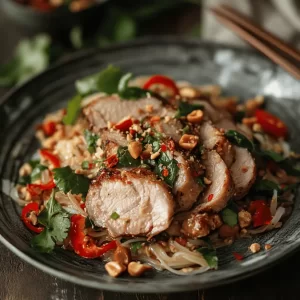
Thai Peanut Pork Tenderloin with Rice Vermicelli Noodles
Ingredients
For The Pork
- 2 tbsp soy sauce
- 1 tbsp fish sauce
- 2 tbsp lime juice
- 1 tbsp honey
- 1 tbsp sesame oil
- 2 tsp The Spice Girl Kitchen Thai Seasoning
- 1 lb pork tenderloin
- 1 tbsp coconut oil, for searing
For The Peanut Sauce
- 1/3 cup creamy peanut butter
- 2 tbsp soy sauce
- 1 tbsp fish sauce
- 1 tbsp rice vinegar
- 2 tbsp lime juice
- 2 tsp sriracha or chili garlic sauce
- 2 tsp honey
- 1 tsp The Spice Girl Kitchen Thai Seasoning
- 1/4 cup coconut milk
For The Noodles
- 8 oz vermicelli noodles (or glass noodles)
- 1 tbsp sesame oil
- 1 red bell pepper, thinly sliced
- 1/2 red onion, thinly sliced
- 1/4 cup fresh cilantro
- 1/4 cup fresh basil
- 1/4 cup roasted peanuts, chopped
- 1-2 red chilies, thinly sliced (optional)
Instructions
Marinate the Pork
- In a bowl, combine soy sauce, fish sauce, lime juice, honey, sesame oil, and Thai seasoning.
- Place the pork tenderloin in a resealable plastic bag or shallow dish and pour the marinade over it. Let it marinate in the fridge for at least 30 minutes (up to 4 hours for more flavor).
Cook the Pork
- Preheat your oven to 400°F.
- Heat coconut oil in a large oven-safe skillet over medium-high heat. Sear the marinated pork on all sides until golden brown, about 2-3 minutes per side.
- Transfer the skillet to the oven and roast the pork for 15-20 minutes, or until the internal temperature reaches 145°F. Let the pork rest for 5 minutes before slicing.
Prepare the Peanut Sauce & Noodles
- While the pork is cooking, whisk together the peanut butter, soy sauce, fish sauce, rice vinegar, lime juice, sriracha, honey, Thai spice, and coconut milk in a small bowl until smooth. Adjust consistency by adding more liquid if needed.
- Cook the rice vermicelli noodles according to package instructions. Drain and toss with sesame oil to prevent sticking.
Assemble & Serve
- In a large mixing bowl, toss the cooked noodles with the red bell pepper, red onion, fresh cilantro, and basil/mint leaves. Drizzle half of the peanut sauce over the noodle mixture and toss to coat.
- Divide the noodles among serving plates. Arrange the sliced pork tenderloin on top of the noodles. Drizzle more peanut sauce over the pork. Garnish with chopped peanuts, sliced red chilies, lime wedges, and additional cilantro if desired.
Notes
Vermicelli vs. Glass Noodles: Which One is Right for Your Dish?
When it comes to this Thai Peanut Pork Tenderloin recipe, the type of noodle you choose can make all the difference. Two popular options that work beautifully in this dish are rice vermicelli and glass noodles. Though they may look similar, these noodles have distinct characteristics that can slightly change the texture and experience of your meal.Rice Vermicelli Noodles
Rice Vermicelli Noodles are thin, white noodles made from rice flour. They have a light, springy texture that’s perfect for soaking up sauces while staying tender. Common in Southeast Asian cuisine, they’re the go-to choice for dishes like Vietnamese pho and pad Thai. Their neutral flavor lets the bold peanut sauce and fresh herbs shine in this recipe, making them an ideal base for savory dishes.Glass Noodles
Glass Noodles, also known as cellophane or mung bean noodles, are translucent when cooked and have a more slippery, chewy texture. These noodles are made from mung bean starch and are often found in Korean and Chinese cuisine. They’re slightly heartier than rice vermicelli, giving the dish more bite while still allowing the sauce to cling to them nicely. Both noodles work well in this recipe, so it comes down to your personal preference. If you prefer a lighter texture that lets the flavors of the pork and sauce take center stage, go for rice vermicelli. But if you want a bit more chew and a slightly different mouthfeel, glass noodles are a great alternative. No matter which one you choose, the noodles serve as the perfect foundation for this flavor-packed dish.This post was all about Thai Peanut Pork Tenderloin!
Did you make this recipe? Make sure to tag me @thespicegirlkitchen_ on Instagram or @thespicegirlkitchen on TikTok! I love seeing your recreations! I will be your ultimate hype woman!
Want to learn more about Kelsey? Click here to read her story!

